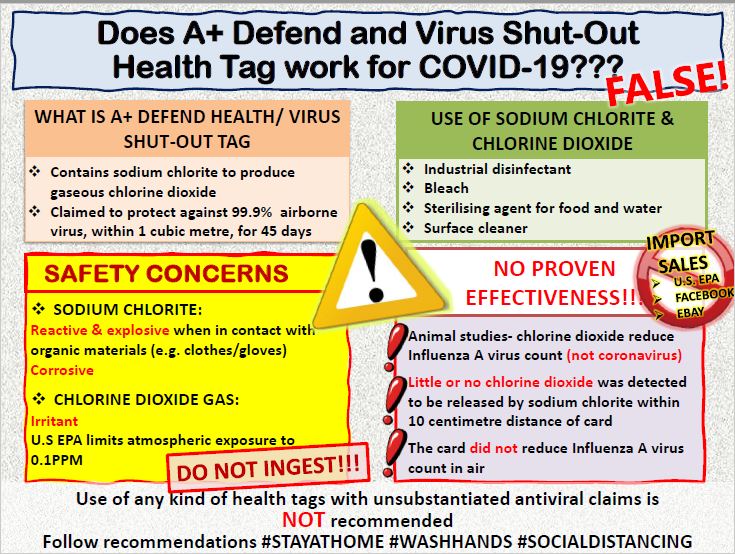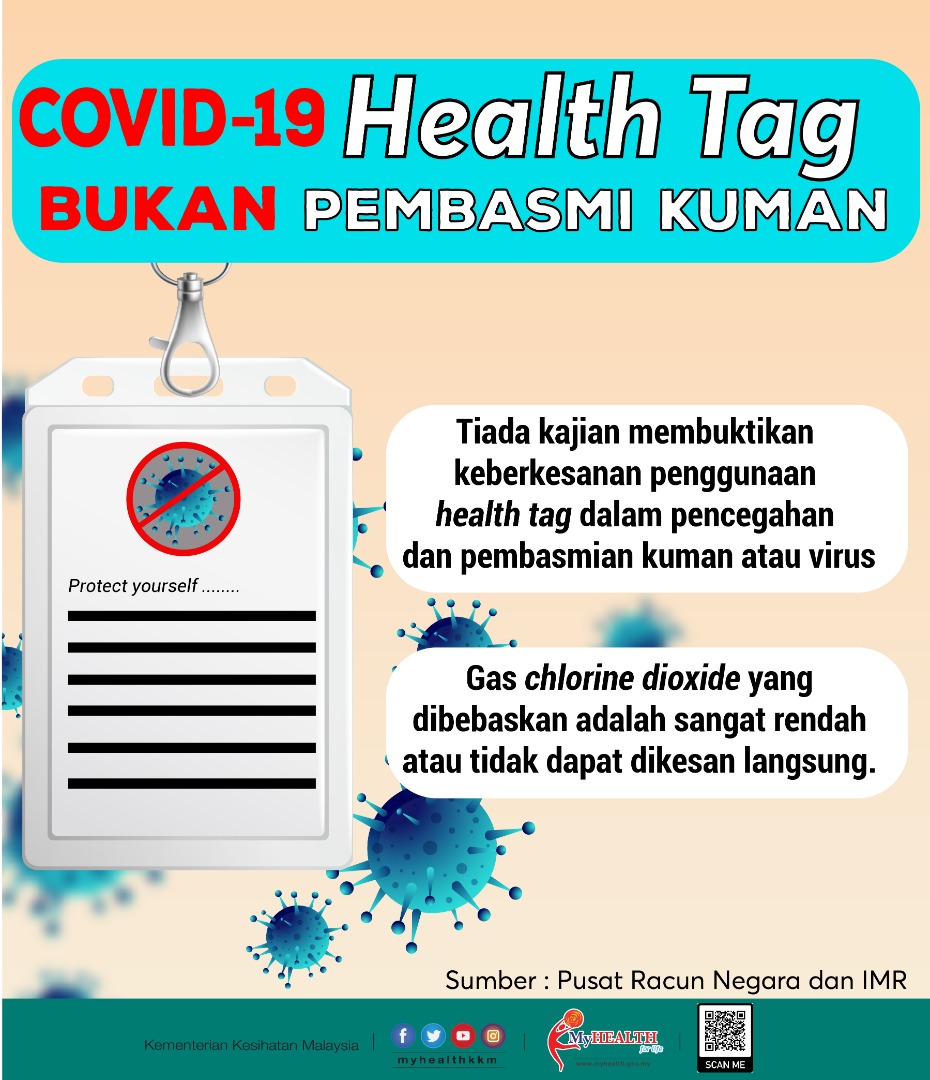EXECUTIVE SUMMARY
Title
Use of Wearable Health Tags to Protect Against Coronavirus Diseases (COVID-19)
Objective
The objective of this report is to assess current available evidence on the potential of wearable health tags in COVID-19 management based on its efficacy and safety.
Methodology
Electronic databases were searched using pre-determined terminologies such as ‘sodium chlorite’, ‘chlorine oxide’, ‘antiviral’, immunomodulatory’, ‘immune response’, ‘mechanism of action’, and ‘safety’. All clinical and preclinical studies (both in vitro and in vivo) related to safety and efficacy or effectiveness of wearable health tags in treating viral diseases were included.
Results and discussion:
Efficacy
In terms of antiviral efficacy evidence of chlorine gas, one animal study of mice in semi-closed cages exposed to low levels of chlorine gas (0.03ppm, 15 mins, for three days) and exposed to aerosols of Influenza A virus, had significantly lower viral load. In the same study, in vitro evidence showed that chloride dioxide denatured viral envelope proteins (haemagglutinin and neuraminidase) of the Influenza A virus. However, factors such as the yield of chloride dioxide and how fast the gas dissipates and duration it lingers in the air needs to be answered in relation the health tag product.
Safety
Both chlorine dioxide and sodium chlorite are not meant to be ingested. The U.S FDA has received reports of consumers who presented severe vomiting, severe diarrhea, life-threatening low hypotension due to dehydration, and acute liver failure after drinking commercially sold chloride dioxide containing drinks.
Conclusion
The article quoted by the websites and companies selling this product on efficacy is only an in vivo study conducted in a controlled environment on Influenza A virus. It is important to highlight that this efficacy data has not been translated into human trials and is not advocated by any agency as a strategy in pandemics that can prevent the need of evacuation or other pandemic management strategies, as claimed by the company
Full report




